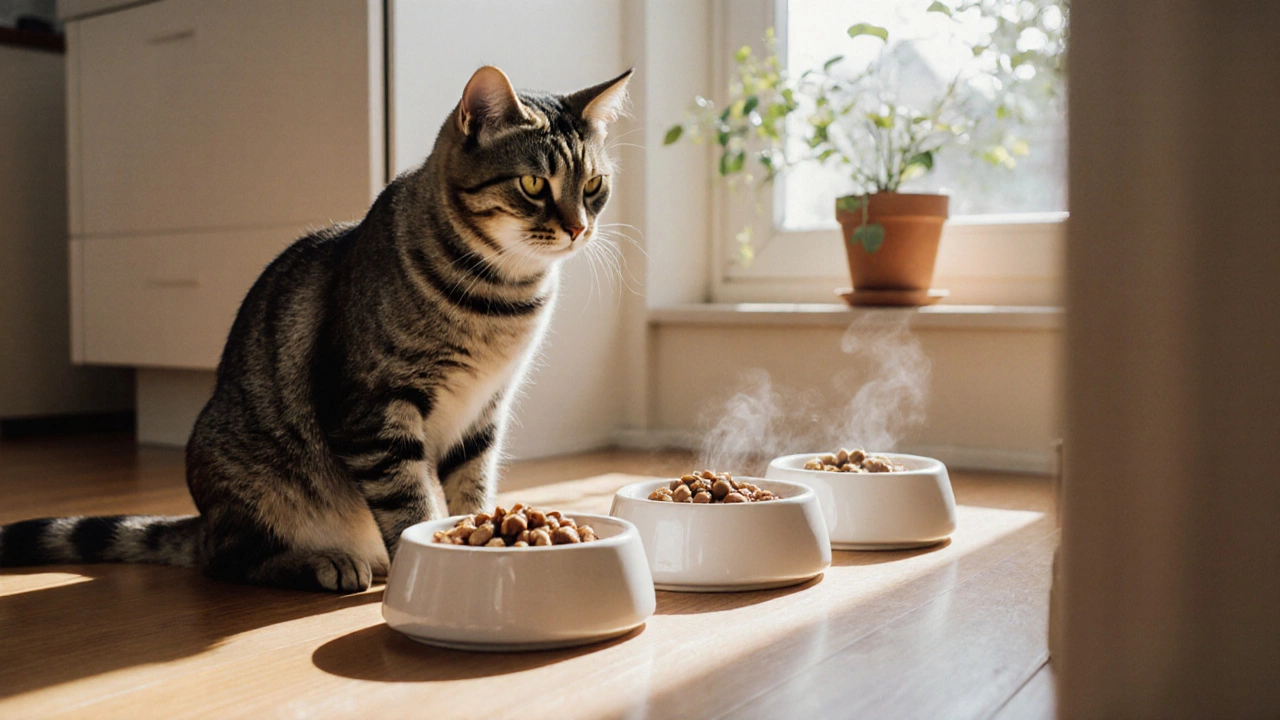Cat Food Frequency – How Often Should Your Cat Eat?
When planning Cat Food Frequency, the regular timing and portion size of meals given to a cat. Also known as cat feeding schedule, it helps keep weight stable, digestion smooth, and energy steady. Dog Feeding Schedule, a similar concept used for dogs shows that consistent meals work across species, but cats have unique metabolic quirks. For example, a senior indoor cat may thrive on two small meals a day, while a kitten needs four to six meals to support rapid growth. Pet Nutrition, the overall balance of proteins, fats, carbs, vitamins and minerals in a pet's diet sets the foundation; without the right nutrients, even a perfect feeding timetable won’t prevent health issues. Finally, the choice between Wet Cat Food, high‑moisture meals that boost hydration and are easy to chew and Dry Cat Food, low‑moisture kibble that supports dental health and is convenient to store affects how often you should serve each portion, because moisture content changes satiety cues.
Why Timing Matters and How to Match It to Your Cat’s Lifestyle
Cat Food Frequency isn’t just a number; it’s a tool that works with a cat’s natural hunting instincts. Outdoor‑oriented cats often prefer several small meals that mimic catching prey, while indoor cats may be content with fewer, larger servings. The semantic triple “Cat Food Frequency encompasses meal timing” captures this relationship: timing determines how the cat’s metabolism processes calories, and the triple “Cat Food Frequency requires portion control” links scheduling to weight management. When you align feeding times with a cat’s activity peaks—usually dawn and dusk—you’re supporting a steady blood‑sugar level, reducing the risk of obesity, and keeping the urinary tract healthy. If you’re already tracking your cat’s weight, note that a 5‑lb indoor cat typically needs about 200 kcal per day, split into two 100 kcal meals. Adjust the split if you add high‑moisture wet food, which can be more filling per calorie.
Another semantic link is “Pet nutrition influences feeding frequency”. A diet rich in protein and moderate in fat digests slower, allowing longer intervals between meals. Conversely, a high‑carb diet may spike insulin quickly, prompting more frequent meals. When you choose a wet‑food‑first approach, you’ll often see cats eat less of the dry kibble later, letting you stretch the dry portion to a second or third feeding. Always read the label’s recommended daily amount, then divide it by the number of meals you plan. For kittens, the rule of thumb is 4‑6 meals daily; for adult cats, 2‑3 meals works for most. Senior cats with reduced appetite may benefit from smaller, more frequent meals to keep their metabolism humming.
Practical tips to nail the right frequency: start by observing your cat’s natural eating windows—most will approach the bowl within a half‑hour of being fed. Use a timed feeder if you’re away during peak times; this reduces anxiety and prevents over‑eating. Keep fresh water available, especially if you feed mostly dry kibble, because dehydration can mask hunger signals. Finally, monitor stool quality; firm, well‑shaped stools indicate the feeding schedule and diet are in sync. If you notice loose stools, try spacing meals a bit farther apart or swapping a portion of dry kibble for wet food. The next section of this page will walk you through specific scenarios—kittens, adult indoor cats, senior cats with health concerns—and show how the right cat food frequency can keep them thriving. Keep reading to see the full range of advice and examples tailored to every cat stage.

How Many Times Should You Feed a Cat? Expert Guide to Feeding Frequency
Learn the ideal number of meals per day for kittens, adults, and senior cats, how food type affects timing, and practical steps to set a healthy feeding schedule.
View more